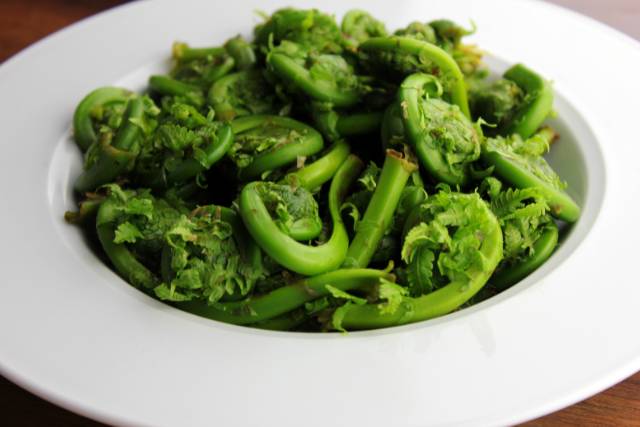
Fiddleheads 101: Everything You Need to Know About This Unique Green Delicacy
In the enchanting dance between the earth and the changing seasons, a culinary overture unfolds, heralding the arrival of a whimsical delicacy that captivates both the palate and imagination—fiddleheads. Picture a verdant symphony of tightly coiled fern shoots emerging from the forest floor, a herald of spring's awakening. These intricate, spiral wonders, resembling the scroll of a hidden manuscript, offer a culinary journey through time, nature, and the essence of fleeting indulgence.
As we unravel the story of fiddleheads, we embark on a gastronomic adventure, discovering the delicate flavors and nutritional crescendo hidden within these elusive green scrolls. Join us as we traverse the lush landscapes where ferns flourish and explore the culinary enchantment that unfolds when fiddleheads take center stage on the plate.
Fiddleheads are the tightly coiled, edible shoots of certain ferns, most commonly the ostrich fern (Matteuccia struthiopteris). These young, curled fern fronds appear in the early spring, usually from late April to early June, depending on the region and climate.
The name "fiddlehead" comes from the tightly coiled fronds' resemblance to a violin's scroll end (fiddle). They are typically harvested before the fronds unfurl into full-grown fern leaves. Fiddleheads are often foraged in the wild or cultivated for culinary use.
These young fern shoots have a unique flavor that crosses between asparagus and green beans. They are enjoyed for their crisp texture and earthy taste, making them a sought-after ingredient in various cuisines. Fiddleheads can be sautéed, steamed, boiled, or added to salads, soups, and other dishes. It's important to note that not all ferns are edible, and consumption should be limited to recognized edible varieties to avoid potential health risks.
Here are the other things you need to know about Fiddleheads:
Harvesting:
Timing: Fiddleheads are best harvested when young and tightly coiled, usually in late spring to early summer.
Sustainability: Harvesting should be done sustainably to ensure the ferns can regenerate. It's recommended to pick only a portion of the available fiddleheads from a patch, allowing the rest to grow into mature ferns.
Culinary Use:
Flavor Profile: Fiddleheads have a unique taste, often described as a combination of asparagus and green beans, with a hint of nuttiness.
Preparation: Before cooking, fiddleheads should be thoroughly washed to remove debris. The brown husk should also be peeled off. They can be steamed, sautéed, boiled, or incorporated into various dishes such as salads, soups, and stir-fries.
Safety Note: Fiddleheads should be cooked before consumption to eliminate potential health risks associated with raw consumption.
Nutritional Value:
Fiddleheads are a good source of vitamins and minerals, including vitamins A, C, potassium, and iron.
They are low in calories and fat, making them a healthy addition to a balanced diet.
Cautions:
Edible Varieties: Only certain fern varieties are edible, and not all fiddleheads are safe for consumption. Stick to recognized edible varieties like the ostrich fern to avoid potential toxicity.
Health Considerations: Some individuals may be sensitive to certain compounds in fiddleheads, and excessive consumption should be avoided.
Storage:
Fiddleheads are best enjoyed fresh, but if storing is necessary, keep them in the refrigerator temporarily. Blanching and freezing are also viable storage options.
Cultural and Culinary Significance:
Fiddleheads are considered a delicacy in many cuisines, and their seasonal availability adds to their culinary appeal.
They have cultural significance for some indigenous communities, where they have been a traditional food source.
Remember to consult local guidelines and regulations regarding foraging, and when in doubt, seek guidance from experienced foragers or experts to ensure safe and responsible harvesting.
Disclaimer: The information provided in this article is for general information purposes only. All information in this article is sourced from other websites, and we do not represent any rights regarding the contents and information on the site. All rights belong to their original owner.
